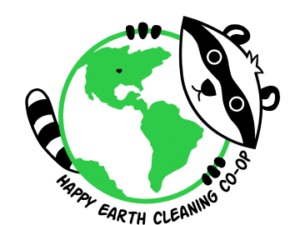
Introduction
Welcome to Day 3 of Happy Earth Cleaning Co-op’s Earth Week celebration! Today, on April 24th, we are talking about animals and how they are harmed by plastic pollution. As Happy Earthlings wear animal-inspired clothing, we celebrate wildlife on our planet and recognize our responsibility to keep our garbage out of their habitats.
Plastic Pollution: A Threat to Animal Welfare
The amount of plastic that is produced in the world every year has increased explosively in just a human lifetime – from 2 million tons in 1950 to over 390 million tons in 2021. Most of this is destined for single-use products, and only about 10% of all plastic gets recycled. Despite their resilience, animals face a growing threat from plastic pollution. There are many ways animals can be harmed by all this unnecessary waste.
Entanglement
Reports from around the globe document over 800 species becoming entangled in plastic debris, with incidents steadily increasing. Animals, including marine mammals and seabirds, suffer injuries or death due to entanglement, impacting their ability to hunt, swim, or fly freely. We have all heard about sea turtles getting caught in plastic six-pack can rings. But animals in our backyards get tangled in plastic as well – like this deer that got its head stuck in a plastic Halloween pumpkin. The Minnesota DNR mentions that plastic mesh can be a hazard for turtles, snakes, voles, fish, and ducklings. And balloon releases can be hazardous for birds, who may get balloon ribbons caught around their necks.
Ingestion
Animals often mistake plastic for food. Marine creatures, like turtles, will eat plastic bags because they look so much like jellyfish. Sometimes animals eat so much plastic that their digestive systems become completely blocked, and they starve to death. According to the folks at Plastic Soup Foundation, half of all camels in the United Arab Emirates die this way. Lumps of plastic weighing between ten and sixty kilos (that’s up to 132 pounds!) have been found in camel stomachs.
Plastic ingestion can also expose animals to harmful toxins, and lead to health issues, like sea birds who develop plasticosis. The bits of plastic birds ingest cause internal scarring in their stomachs, and that scarring causes difficulty digesting food and absorbing nutrients. It can even lead to parasite infections as the birds’ stomach acid isn’t strong enough to fight the intruders. Researchers have also found that extremely small particles called “nanoplastics” can accumulate in the brains of fish, and cause brain damage and behavior changes.
Many of the species hit the hardest by plastic pollution are marine species, like fish, whales, turtles, and sea birds. You may be thinking “what do I, a Midwesterner, have to do with plastic in the ocean when it’s so far away?” Well, our own Mississippi River flows into the ocean, and can bring our plastic waste along with it. Microplastics have been found in lakes as well, including Lake Superior and the Boundary Waters. One study compared museum specimens of freshwater fish, and found increasing amounts of plastic inside the fishes’ digestive systems as time went on. This is bad news for our local ecosystems.
Action Plan
If you love animals as much as we do, all this harm and destruction has been difficult to take in.
The good news is, there are things we can do to help!
Will you take at least one of these actions with us?
- Participate in local Twin Cities initiatives like Adopt-a-Drain to prevent pollutants like plastic from entering waterways.
- Stay informed and support ocean conservation efforts with Ocean Action alerts from the Monterey Bay Aquarium.
- Symbolically “adopt” a sea turtle, whale, dolphin, or albatross through the Oceanic Society.
- Live near a river, stream, or lake? Volunteer to monitor water quality in your area with the MN Pollution Control Agency.
- Choose beauty products without microplastics to reduce plastic pollution in waterways.
- Ask your legislators to help ban plastic bags in Minnesota.
Conclusion
As Day 3 of Earth Week concludes, let’s renew our commitment to caring for Earth’s wildlife. By addressing plastic pollution with compassion and determination, we can ensure a future where animals thrive alongside us. Join us tomorrow as we explore the environmental impacts of the fast fashion industry.


